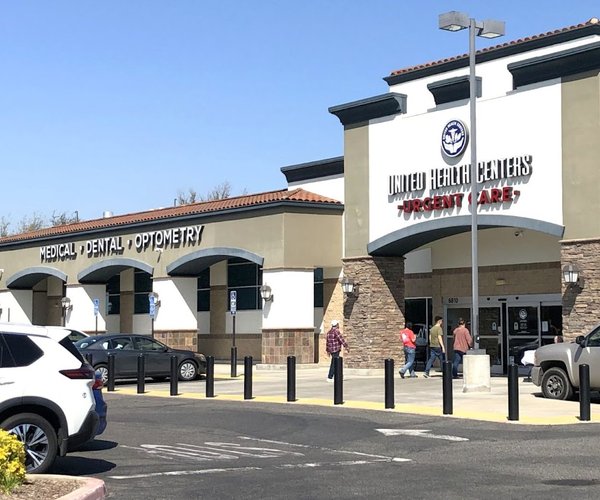The Turlock City Council is set to consider on Tuesday eliminating fines for violating public health orders and ways to allow businesses more room to operate as reopening efforts continue.
One month after adopting administrative fines for violating shelter-in-place orders given by Governor Gavin Newsom and the Stanislaus County Health Officer to limit the spread of the coronavirus, the Turlock City Council will consider eliminating those fines.
On April 14, the Turlock City Council unanimously approved Ordinance No. 1277-CS, adopting the Governor’s Executive Order and the County Health Order with a mechanism for enforcement by the issuance of fines through an administrative citation. The fines adopted were $250 for the first violation, $500 for the second violation and $1,000 for the third and any subsequent violations.
During the April Council meeting, Turlock Police Chief Nino Amirfar said the administrative fines would only be used after a business and/or resident was warned that they are violating shelter-in-place orders.
“We have been utilizing educational processes throughout the city and it has been working excellently. I really do not intend to, nor do I want to, issue these types of citations. But it is a tool to utilize these types of administrative cites and before we do such, we will try to gain compliance always,” said Amirfar on April 14.
On Tuesday, the Council will consider amending the ordinance to eliminate the fine schedule and have shelter-in-place order violations only be enforced as a public nuisance.
It’s unclear what would constitute a public nuisance enforcement related to violating health orders. The Turlock Municipal Code covers nuisances related to noise, weeds and abandoned vehicles, but not public health order violations. All of the nuisances covered in the Municipal Code include administrative fines, such as the $50 fine is a public nuisance is declared for repairing or dismantling a vehicle within the view of persons traveling on the public-right-of-way.
If all fines are eliminated, the enforcement may be just a written reprimand for ignoring the health orders.
As of Monday, the City of Turlock has not issued any administrative fines related to the public health orders, according to city attorney Doug White.
The request to revisit the health order fines came from Mayor Amy Bublak. The Mayor declined to comment for this story about her reasons for wanting the item on the agenda, stating she “will discuss it in public so as not to violate our public’s opportunity to have their say first.”
Other Council members are not in support of this measure.
"The Mayor was the only member on the council that thought this item was necessary to revisit,” said Vice Mayor Andrew Nosrati. “As Chief Amirfar indicated, we have been able to reach 100% compliance through education efforts and by working with our business community. A fine of $250 would only be pursued for blatant disregard of public health orders, and an unwillingness to work with law officers and not a single one has yet been issued.
“This is a nonissue, it is purely political, and as most would agree, does not act in the best interest of our overall community. It punishes law abiding business owners and endangers the health of the vulnerable.
“Furthermore, this jeopardizes our city financially in multiple ways. As was shown in last week's actions by the state, a city that undermines public health orders would risk economic relief from disaster funds and enabling lawlessness, which this does, would leave us at greater vulnerability for spread of the virus requiring reversal of the gradual reopening efforts we are currently engaged in.
“I find it disappointing that there are elected officials that would choose this time, where unity and faith in our government’s ability to lead is needed, to pursue something so divisive, risky, and in opposition to our general well-being."
“We agreed as a council to follow recommendations from the public health officer and work with the Stanislaus County,” said Councilmember Becky Arellano. “We are still learning and yet do not fully understand the virus and its course running through our community. We have to be sensible in business as well as in community. We do have to protect our democracy and our health at the same time. We are working proactively to ensure our economy can recover and proceed in a ‘new normal’ capacity. There is no time for politics and this agenda item is just what this is. We have had 100% compliance so to waste our time for political nonsense at this time is a tragedy.”
“We are all committed to supporting local businesses and to reopening our economy as soon and as safely as possible,” said Councilmember Nicole Larson. “We agreed to follow recommendations from our public health official and the state to ensure the health and safety of our community. On Tuesday we are discussing meaningful ways to support the reopening businesses by creating supportive measures like flexible outdoor operations permits and encouraging residents to wear face coverings when out in public. There is still much work to be done as this situation is continually evolving. The decisions we make during our gradually reopening of our economy must be driven by data, science, and public health experts while weighing the economic impacts of this pandemic. This leaves no room for politics, personal agendas, or attempts to appease certain interest groups for political gain. We all need to be striving for the same objective - restoring our way of life while saving as many lives as possible.”
Also on Tuesday, the City Council is expected to consider:
· Adopting a resolution that “strongly recommends” all residents and visitors within the city limits to wear a face mask or covering when leaving their place of residence;
· Authorizing temporary outdoor operations of qualifying restaurants, bars, wineries and breweries; and
· Authorizing temporary outdoor operations of qualifying retail and commercial businesses.
The temporary outdoor operations resolutions are meant to allow businesses to use outdoor spaces, such as sidewalks and parking lots, in order to meet social distancing guidelines that are expected to be mandated during economic reopening phases, according to White.
The City Council will hold its regularly scheduled meeting at 6 p.m. Tuesday. Due to the social distancing health order, the meeting will not be physically open to the public at City Hall. The meeting will be streamed on the City of Turlock’s website and broadcast on Spectrum Channel 2.
Members of the public can also participate in the meeting by Zoom at https://us02web.zoom.us/j/87043492784 or join by telephone at 669-900-6833 webinar ID# 870-4349-2784.









